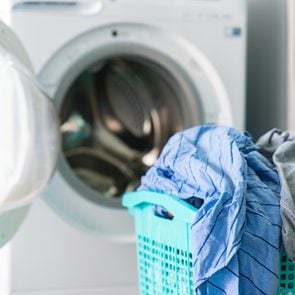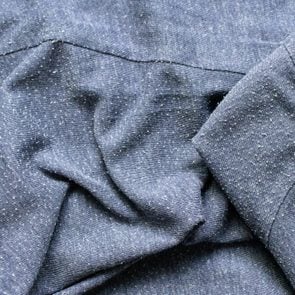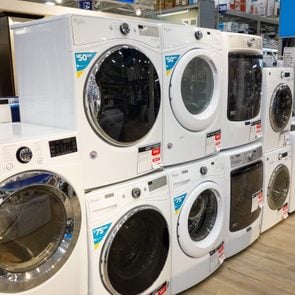Should You Be Adding Aluminum Foil to Your Dryer? We Put the TikTok Hack to the Test
Updated: Mar. 18, 2024
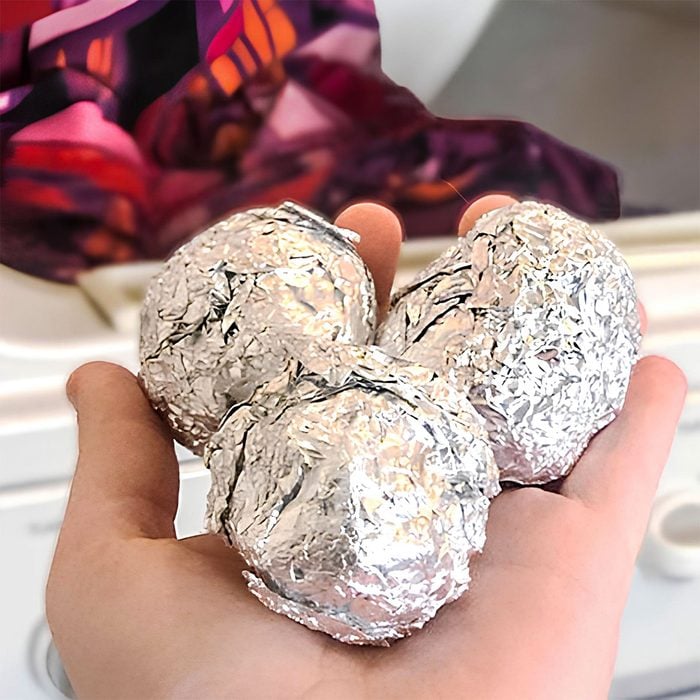
TikTok users swear by this laundry hack, but can you really beat static cling with aluminum foil? We tested the viral trick, and the results may shock you.
On a chilly day, one of the most pleasant chores for me is folding clothes right out of the dryer. The only downside to this cozy experience is that sometimes it can be painfully shocking. OK, so it’s not stick-your-finger-in-a-light-socket shocking, but dang! It still hurts. If you’ve ever peeled a fresh-from-the-dryer nylon slip away from a bath towel, you know what I mean.
Years ago, when my mom taught me how to do laundry, she told me to use dryer sheets. They soon became a household staple. But over time, I didn’t like the way they reduced the absorbency of the towels and interfered with the effectiveness of the lint screen. Now I use wool dryer balls. My towels are very absorbent, but I still have the problem of static cling. (Like the time I discovered a sock sliding out of my pant leg at church.)
It’s obvious I need help with this problem. That’s why I decided to try out a static-reducing hack that’s gone viral on TikTok. It touts one of many aluminum foil uses—for proof the stuff is multifunctional, just look at the aluminum foil Wi-Fi hack—and supposedly has its basis in science. Curious? Let me tell you all about it.
Get Reader’s Digest’s Read Up newsletter for more laundry, cleaning, humor, travel, tech and fun facts all week long.
How might aluminum foil help with static?
We’ve all felt the effects of static—they’re shocking—but what causes it?
According to Kristen Higgins, consumer product testing expert for Henkel’s laundry brands, a combination of the heat and the tumbling motion in the dryer are to blame. “When the clothing fabrics rub against each other, positive and negative electrons become attracted, creating a buildup of electrostatic charge—or static cling,” she says. (So that’s why that sock was stuck in my pant leg! They were attracted to each other.)
The aluminum in DIY foil dryer balls is supposed to help get rid of static in clothing because it acts as a conductor. In other words, it absorbs the electrons and discharges the static buildup.
Why might you want to use aluminum foil instead of dryer sheets?
TikTok videos tout the anti-static properties of aluminum foil dryer balls. I put that to the test, and I’ll dive into my experiences with the hack in a moment. But first, it’s worth pointing out some of the advantages aluminum foil balls have over dryer sheets, beyond any potential anti-static properties.
They save money
Aluminum foil balls are super affordable compared with dryer sheets. A single dryer sheet costs 41 cents and does one load of laundry. By comparison, a 9-foot sheet of aluminum foil makes three 36-inch dryer balls. At 9 cents a foot, the total cost is just 81 cents, and the balls should last for up to two months.
So, if you do 300 loads of laundry a year (as the average American does) and use one dryer sheet for each load, you’ll spend $123 on dryer sheets. If you use three aluminum foil balls and replace them every two months, you’ll spend $4.86 per year.
No doubt, the DIY balls are super affordable.
They don’t reduce absorbency
Aluminum dryer balls do not affect a fabric’s absorbency at all.
On the other hand, dryer sheets release a coating that causes clothes to feel soft. This coating builds up over time and reduces the absorbency of the fabric. That’s why bath towels, kitchen towels and especially microfiber cloths become less absorbent the more often they’re dried with dryer sheets. Dryer sheets also affect the moisture-wicking properties of activewear.
They don’t reduce the effectiveness of the dryer lint filter
As long as you replace the foil balls every two months, or when they show signs of breaking apart, they won’t affect the dryer lint filter.
Unfortunately, you can’t say the same about dryer sheets. Over time, the chemicals on dryer sheets can coat the screen on the dryer lint filter and reduce the flow of air through it. That means it cannot effectively filter out lint particles. To avoid this, be sure to remove dryer lint from the filter after each use and wash the filter every few months.
They don’t irritate sensitive skin
According to the American Academy of Dermatology, about 2.5 million Americans have fragrance allergies. Scented dryer sheets impart a fragrance to your laundry that may irritate the skin and trigger asthma or allergy attacks in people with those sensitivities.
Because they are fragrance-free, aluminum foil balls won’t make you scratch, swell or sneeze.
They provide a chemical-free option
Aluminum foil is 98.5% aluminum, with the balance primarily from iron and silicon (for strength, puncture resistance and ease in dispensing).
By contrast, dryer sheets are typically made with chemicals like dipalmethyl hydroxyethylammoinum methosulfate (to soften and reduce static), fatty acids (to soften), polyester substrate (a carrier), clay and fragrance. If you’re trying to reduce exposure to unnecessary chemicals, you may want to start here. (Look to the Environmental Working Group for more information about chemicals in dryer sheets.)
They are recyclable
Mother Earth needs our help. The more mindful we are about conserving natural resources and minimizing waste, the healthier our environment will be. It’s true that there are creative ways to reuse dryer sheets, but aluminum foil is the real hero here—it can be recycled indefinitely. It’s important to note, however, that some recycling stations will not accept aluminum foil that has food or other substances on it. So remember to wash the foil first before bringing it to be recycled.
How to use aluminum foil in your dryer to reduce static
After watching so many videos praising this hack’s anti-static results, I grabbed the nearest box of Reynold’s Wrap to test it out. I started by making three aluminum foil balls using the steps below.
Step 1: Cut it
Measure a 3-foot length of foil for each ball. I used 12-inch-wide everyday foil, not the heavy-duty kind. Lay the foil on a dry surface and cut three 3-foot lengths, one for each ball.
Step 2: Crunch it
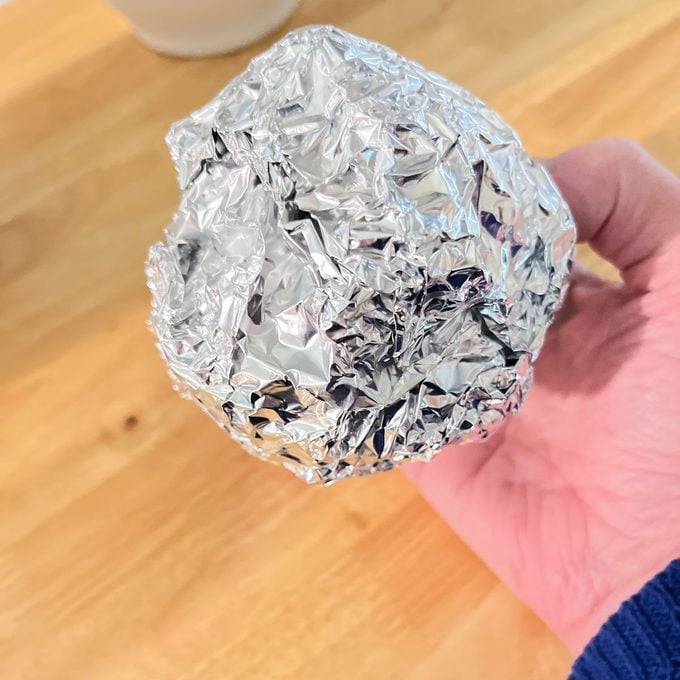
Squeeze the foil ball until it is about 2 to 3 inches in diameter.
Step 3: Smooth it
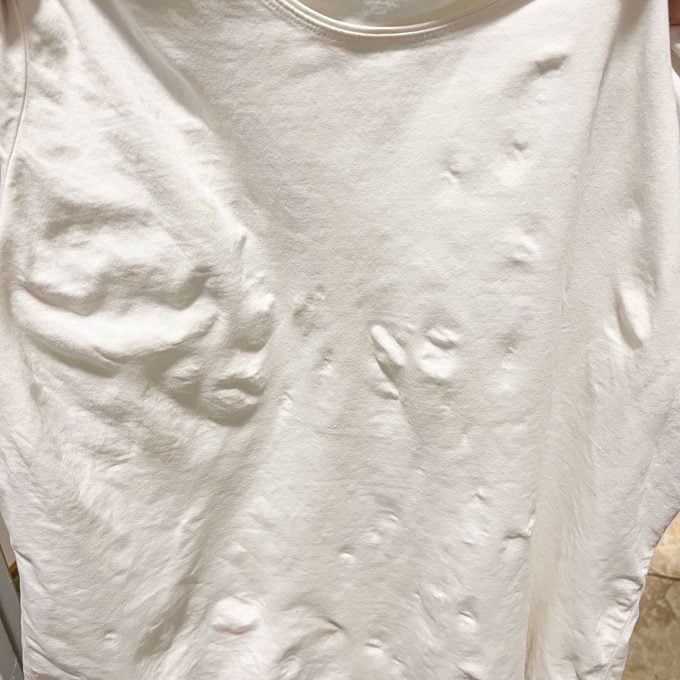
Roll the balls on a hard surface to remove sharp points that may snag clothing. Is this an absolutely necessary step? You bet. And if you don’t believe me, just take a look at the shirt I ruined when I omitted this step.
Step 4: Toss it
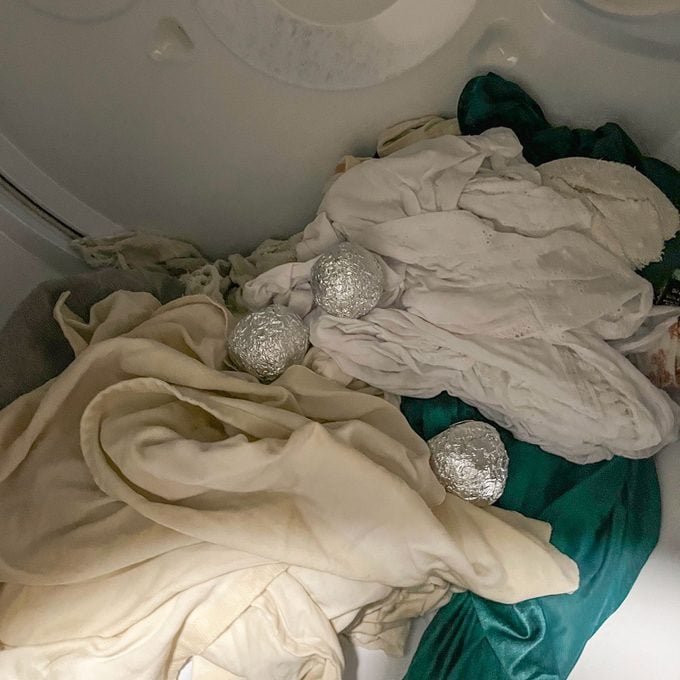
No special technique needed! Just pop your three foil balls into the dryer as you would a dryer sheet or wool and rubber dryer balls.
Step 5: Dry as usual
Use whatever heat setting you normally would. For me, “automatic” is one of the best dryer settings because it prevents overdrying, which contributes to static cling.
Step 6: Replace foil balls as needed
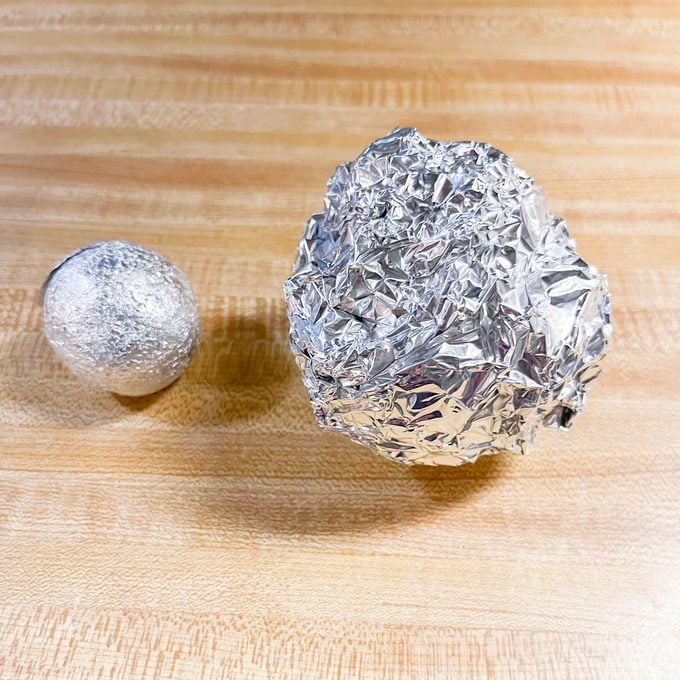
Aluminum foil dryer balls last for about two months on average. When they start to break apart, it’s time to toss them and make new ones. By the way, the balls shrink considerably after each use. They also smooth out more.
Is it safe to use aluminum foil in your dryer?
If you’re worried about aluminum foil overheating and causing a fire in the dryer, put your mind at ease. A properly maintained dryer reaches an average temperature of 135 degrees. That’s nowhere near the 1,220 degrees it takes to ignite aluminum, nor the 205 degrees it takes to ignite lint.
The key phrase here is properly maintained. Dryer fires are a real concern, and in most cases, they happen because of a failure to regularly clean the machine. A buildup of lint can increase your risk of a dryer fire, so be vigilant about cleaning the lint trap and vent.
OK, but will the foil balls do damage to your dryer’s drum? No, foil balls are lightweight and smooth out with use, so they will not damage the drum.
And for those of you also wondering about leeching, rest assured, aluminum foil balls are safe. Unlike with food, aluminum will not leech onto clothes or fabric in a dryer.
Here’s what happened when I tried this hack at home
I was really optimistic about giving this a try. Based on what I remember from science class, using aluminum as a conductor made sense, so I dove right in. Here’s what happened.
Test No. 1
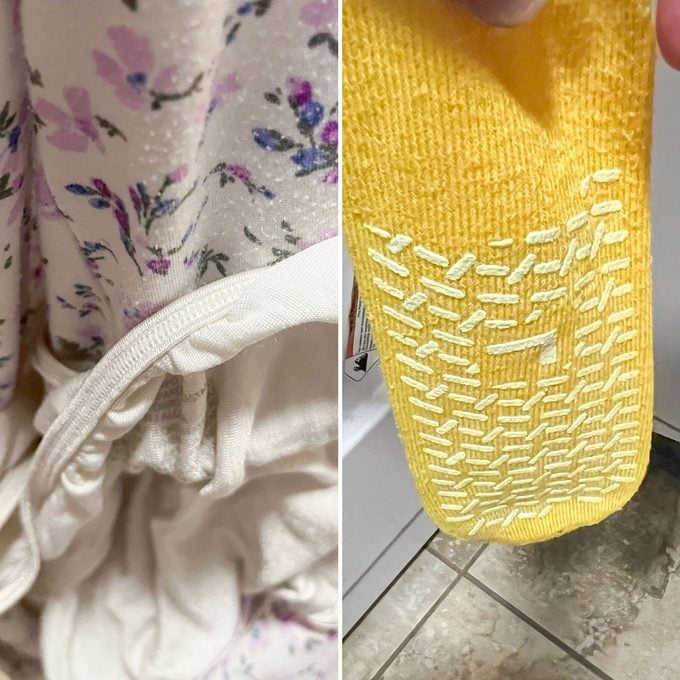
This first batch of laundry included clothing of mixed fabrics and sizes: a cotton sheet, nylon nightgown and underwear, flannel PJ’s, polyester blouses and fluffy socks.
Number of aluminum foil balls: 3, each made from 24 inches of foil
Temperature: Automatic setting, medium heat
Results: One pair of nylon underwear clung to the flannel PJs. There was some static in the cotton-synthetic blend sheets, but nothing clung to them. Surprisingly, the nylon blouse had no static, and neither did the fluffy socks.
Conclusion: It’s not perfect, but not too bad.
Test No. 2
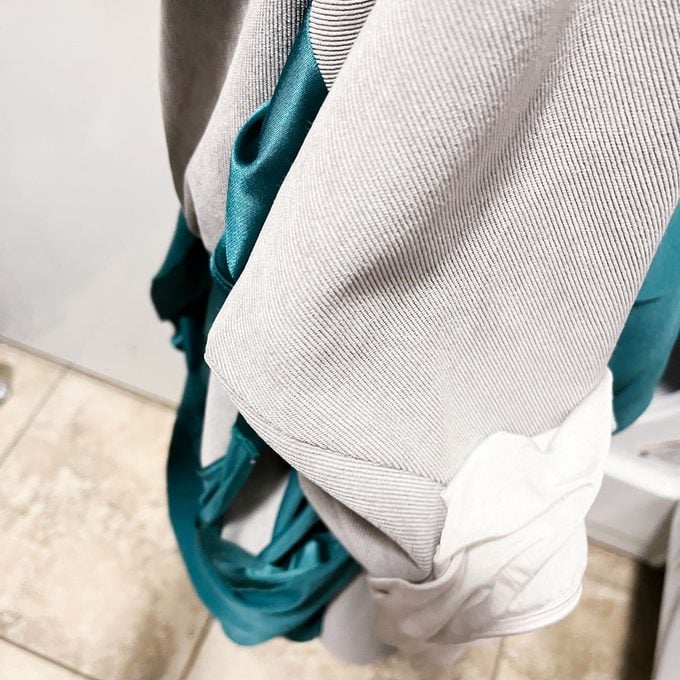
The second batch of laundry included clothing of mixed fabrics and weights, similar to the first batch but with the addition of a rayon blouse and a pair of polyester-and-spandex corduroy slacks.
Number of aluminum foil balls: 3, each made from 30 inches of foil (I theorized that more foil meant bigger balls and better results)
Temperature: Permanent press, automatic setting
Results: There was some light static on the sheet as I was unloading it, but no other objects were attached to it. Then I took out the corduroy slacks and was surprised to find a nylon nightgown and a pair of nylon underwear clinging to the legs of the pants. (Kind of like my oldest daughter did when she started kindergarten.)
Conclusion: There’s lots of static cling on the corduroy—disappointing.
Test No. 3
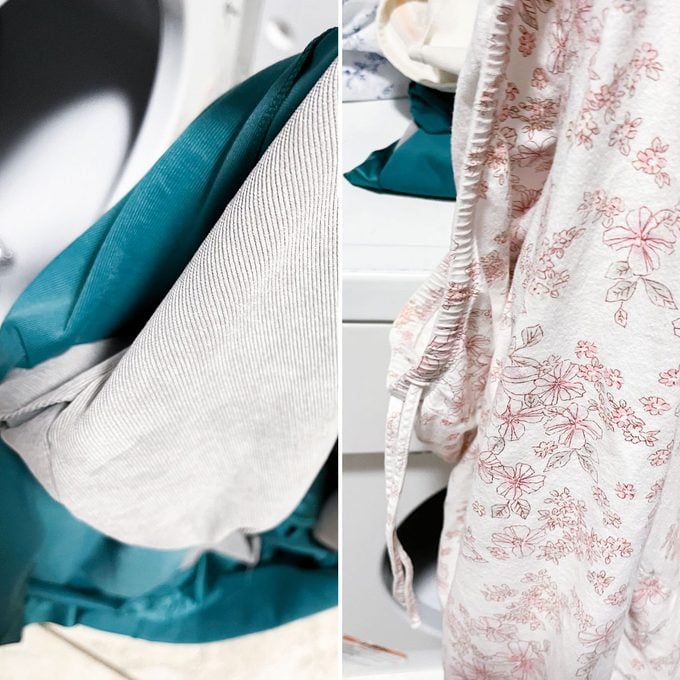
The third batch of laundry included the same items as the second batch. I was determined to beat the static charge on those corduroy pants.
Number of aluminum foil balls: 3, each made from 36 inches of foil (I ramped up the foil again, sure this would knock out static cling)
Temperature: Regular, medium heat, automatic setting
Results: The nightgown was clinging to the corduroy slacks like gum on a tennis shoe. And a cotton dish towel was stuck on the flannel pj’s.
Conclusion: Bummer. I’m beginning to think this hack isn’t all it’s cracked up to be.
Test No. 4
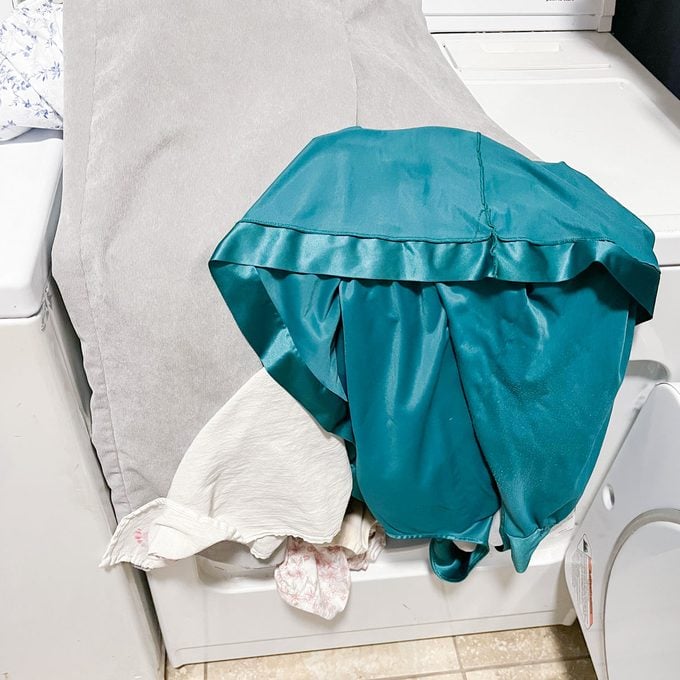
Hearkening back to my college days, I decided to do a control batch using no anti-static devices.
Number of aluminum foil balls: Zero
Temperature: Regular, medium heat, automatic setting
Results: The nylon nightie was once again hanging on the corduroy slacks like Scarlett clinging to Rhett. Plus, a dish towel was along for the ride. I didn’t dare pull those things apart. My fingers were getting sore, and I think I was starting to glow in the dark!
Conclusion: There was a little less static when using the aluminum foil balls than nothing at all, but the difference wasn’t big enough to recommend using the foil hack.
So, does this actually work?
As much as I wanted this trick to banish static from my life—just think of the money savings!—it didn’t impress me. Yes, it works slightly better than nothing at all, but I don’t honestly think it’s something I’d ever try again. Instead, I’m going back to using my wool dryer balls.
About the expert
- Kristen Higgins is the consumer product testing expert for the laundry division of Henkel, whose consumer products line includes Persil, Purex and All laundry detergents. In addition to being a Henkel principal scientist in performance testing, Higgins has 17 years of R&D experience in laundry, home care and beauty products.
Sources:
- Environmental Working Group: “Skip the most toxic fabric softeners”
- Science Direct: “Flammability”
- National Fire Protection Association: “Home Dryer Fires”

